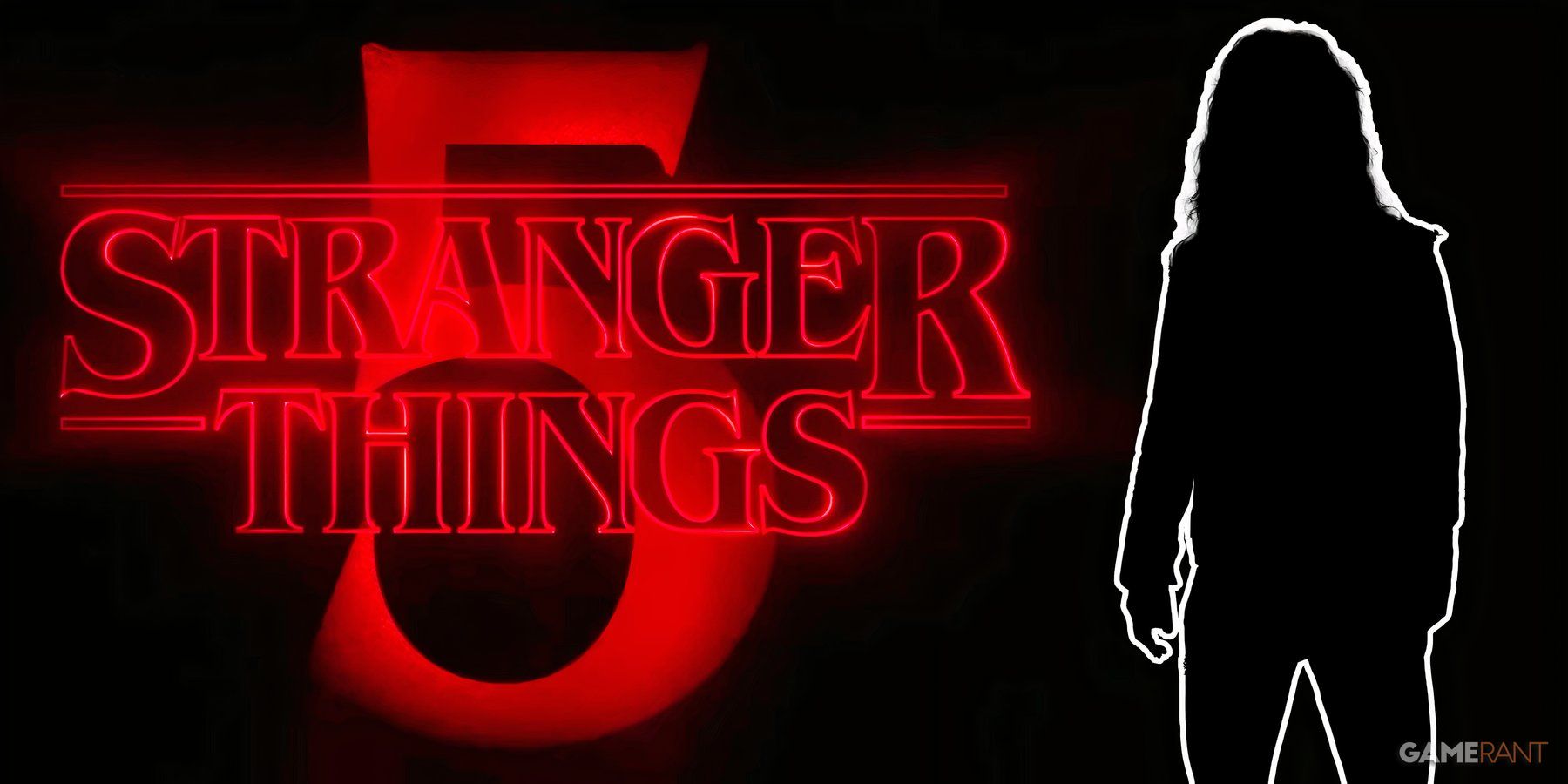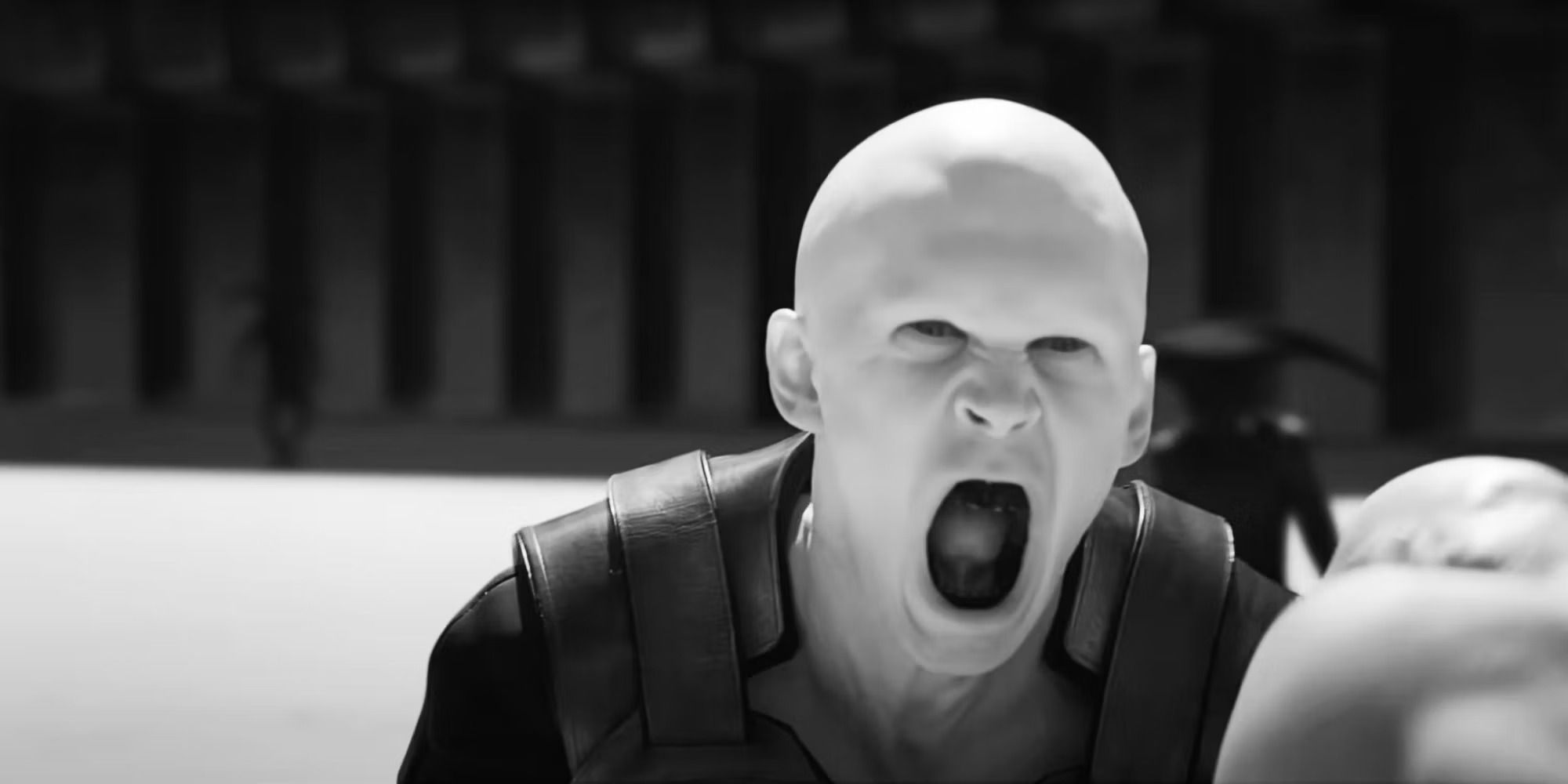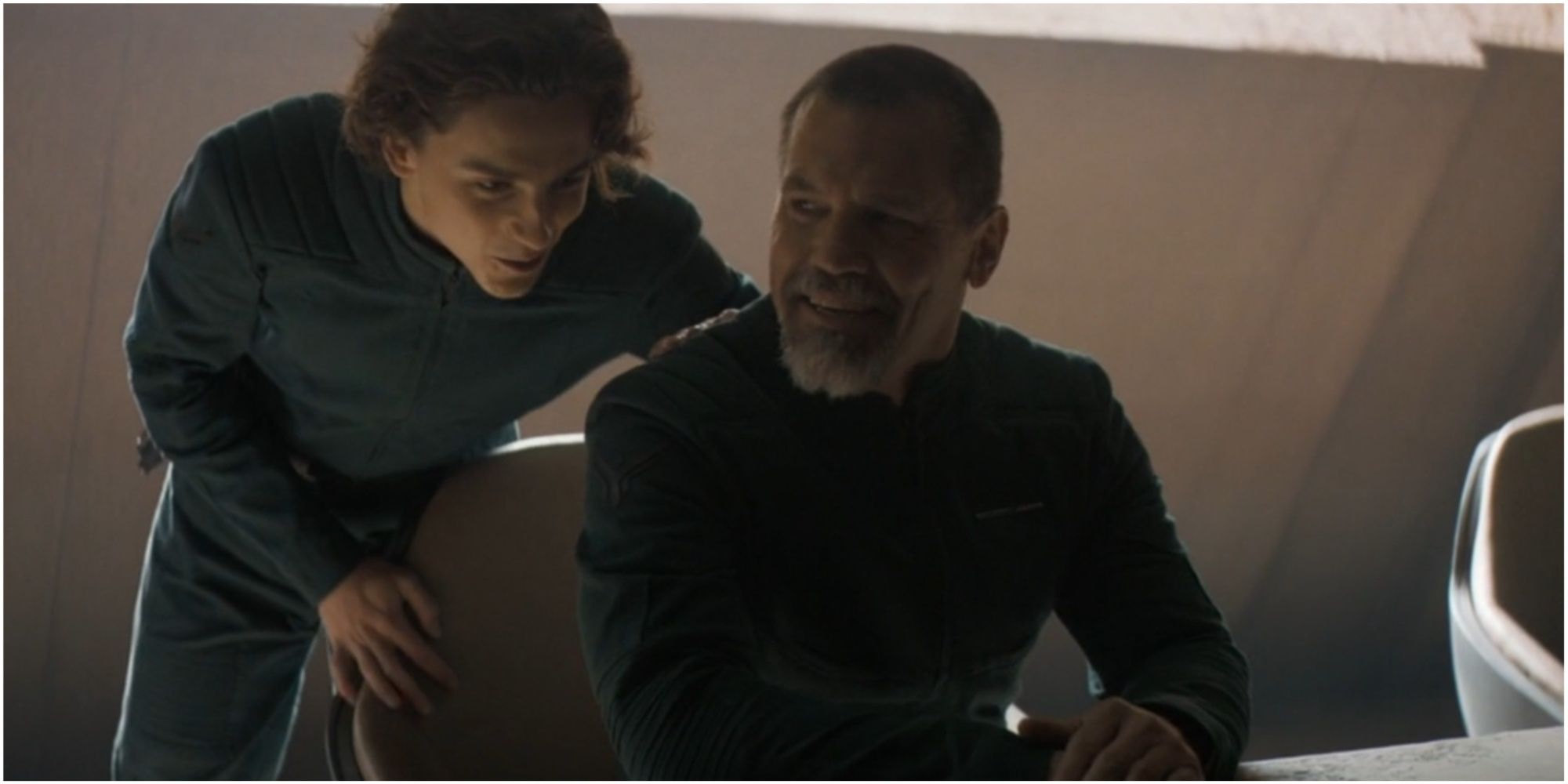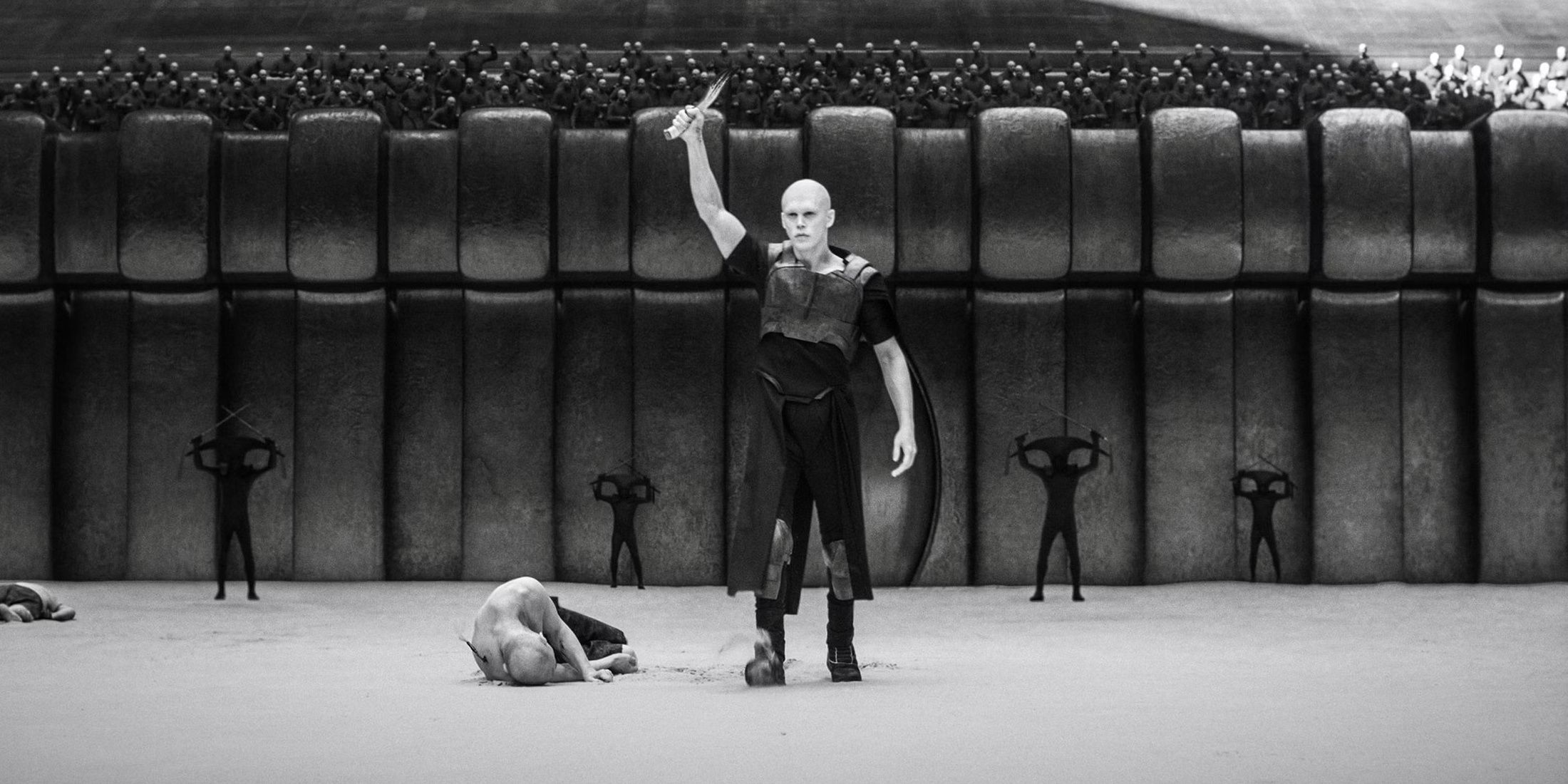One of the central thematic elements of Frank Herbert's Dune is the push-pull relationship human beings have with their environment. Fans never see Old Earth, but the many new worlds have fascinating narrative details in their ecology and industry. The Fremen developed their brutal survival instinct and advanced fighting skills by struggling to live in the deserts of Arrakis. Paul Atreides and his family grew up on a gorgeous, waterlogged planet called Caladan. House Harkonnen holds Giedi Prime, and its industrial sprawl says a lot about the family.
One of the most impressive aspects of Denis Villeneuve's take on Dune is its commitment to immersion. The films seem to invite the audience to Arrakis and encourage them to explore. Where previous Dune adaptations seemed to revel in the alien aspects of the franchise, Denis Villeneuve looks his audience in the eye and assures them that it isn't weird at all. In Villeneuve's Dune, we understand the worlds as they are, rather than making them feel familiar.
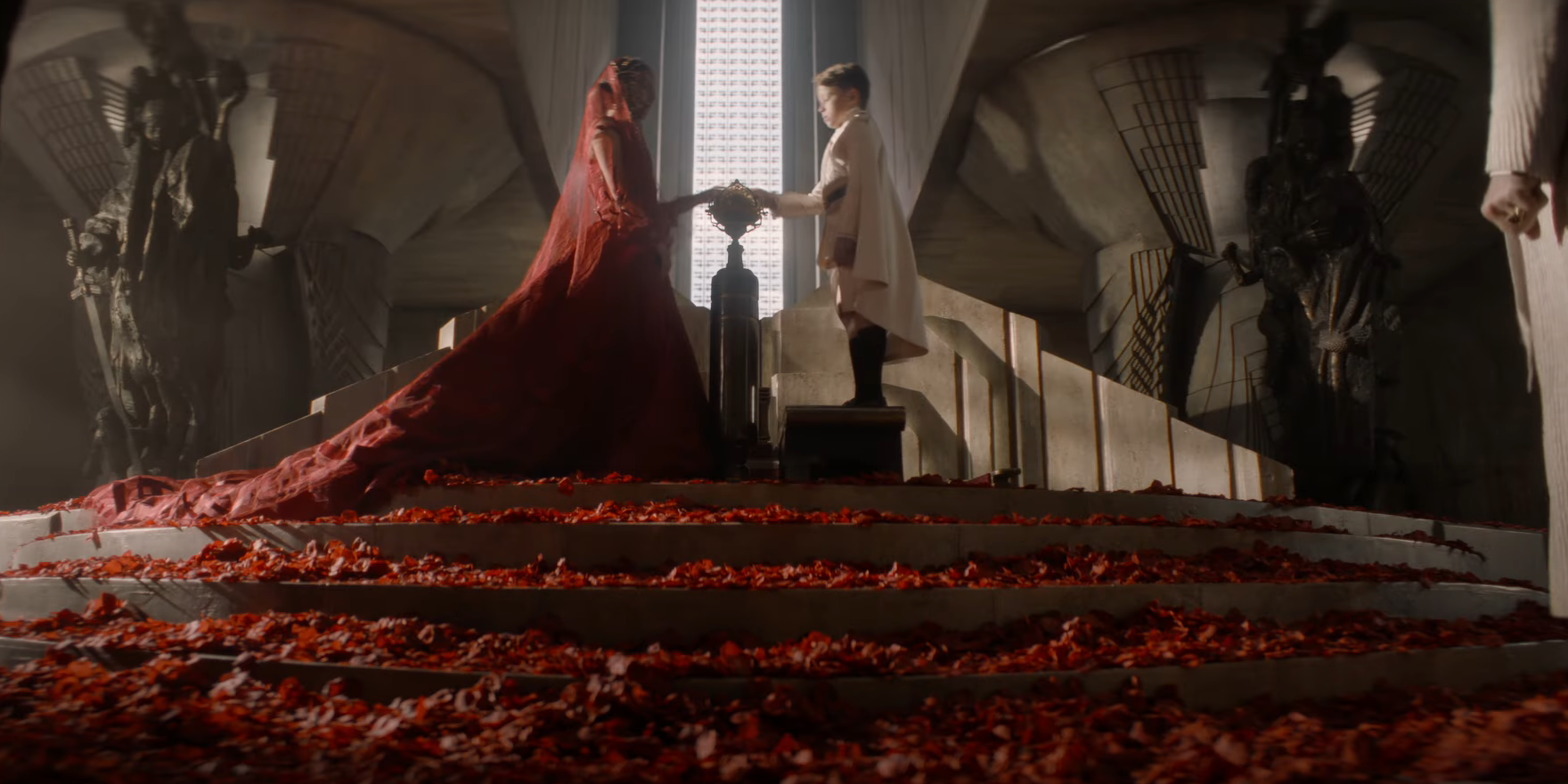
When Does Dune: Prophecy Take Place?
The upcoming Dune prequel will bring fans back more than 10,000 years before the events of the book and movie.
What is Giedi Prime under House Harkonnen?
Giedi Prime is the ancestral homeland of House Harkonnen. It's the third planet orbiting the star 36 Ophiuchi B. No version of the narrative pays much attention to how House Harkonnen acquired Giedi Prime. The original novel doesn't address its political past, but it does mention its previous ecology. In several prequel novels, writers describe Giedi Prime as a pleasant, independent planet with a local Magnus in charge. The Butlerian Jihad, the war between humanity and thinking machines, devastated its surface and replaced its leader. Xavier Harkonnen, an early representative of the family, may have contributed to that downfall when he failed to inspect the planet closely. Sometime after that invasion, House Harkonnen claimed control. Outsiders and historians knew Giedi Prime as a forest planet with plentiful natural resources. House Harkonnen worked tirelessly to ruin its home.
Dune depicts Giedi Prime as a nightmarish industrial sprawl. Nearly every inch of the planet's surface is covered with mines, factories, gladitorial arenas, or massive cities. While the planet's temperature remains normal, it has only a few notable forests. House Harkonnen devoted everything on Giedi Prime to maximizing profit. Industrial and military pursuits demand the free or cheap labor of almost every person on the planet. House Harkonnen forcefully conscripts its soldiers and enslaves its populace to run machines, mine ore, and fight wars. The planet's few remaining forests exist only for logging operations. Everything on the planet exists to uproot and sell natural resources. Giedi Prime's culture encourages combat as a lifestyle in every social class. Members of House Harkonnen fight in arenas to earn popularity among the crowd. This endless industry gradually altered most of Giedi Prime into an artificial wasteland.
How does Giedi Prime change after Dune?
After Paul Muad'Dib Atreides led the Fremen in a Jihad against his enemies, House Harkonnen ceased to exist. Though some elements of the family lived on through the Bene Gesserit breeding program, House Harkonnen was no longer a meaningful political force. Paul handed Giedi Prime to the people of Caladan, the planet he grew up on. He elected his Warmaster and close friend, Gurney Halleck, as Giedi Prime's new leader. Halleck and his family were previously slaves under House Harkonnen, so his newfound control over the planet offered some cathartic irony. Halleck and the people of Caladan renamed Giedi Prime, calling it Gammu. They destroyed most of the industrial sprawl that covered Gammu and allowed its natural beauty to flourish once again. Their rule became questionable as the Bene Gesserit and several other Great Houses claimed parts of the planet. It's still an improvement, but Giedi Prime hasn't become a paradise yet.
Why is Giedi Prime black and white in Dune: Part Two?
The fight on Giedi Prime is one of the most visually striking scenes in Dune: Part Two. It raised questions among many fans. The narrative explanation, invented for the purpose of the film, is that Giedi Prime orbits around a black sun. Instead of 36 Ophiuchi B, an orange dwarf that exists in a triple-star system, Villeneuve's Giedi Prime bathes in the infrared light put forward by a sun covered in spots. They captured this effect with black-and-white infrared cameras. This black star creates a monochromatic environment outdoors during daylight hours. The first film depicted Giedi Prime at night, explaining the substantial difference in appearance. Thematically, this choice reinforces the idea of the Harkonnens as a product of their environment and vice versa. It's reminiscent of old-fashioned Nazi footage. Beyond the desire to capture something visually impressive, this also quickly communicates the moral blight of House Harkonnen by exploring their home. It also explains the family's pale skin tone and grotesque features. It all comes back to quickly and efficiently establishing the rot that every Harkonnen represents.
Giedi Prime is a living embodiment of House Harkonnen's cruelty, greed, and lust for power. It's a planet that once operated on its own with few issues, but the Harkonnens allowed it to fall to ruin and rebuilt it to destroy everything worthwhile for profit. It stands as perfect evidence for the arguments against House Harkonnen. It also reinforces the problems on Arrakis. House Atreides worked to forge alliances on Arrakis. Paul Muad'Dib initially sought to live among the Fremen. House Harkonnen would turn the universe into Giedi Prime if they could.
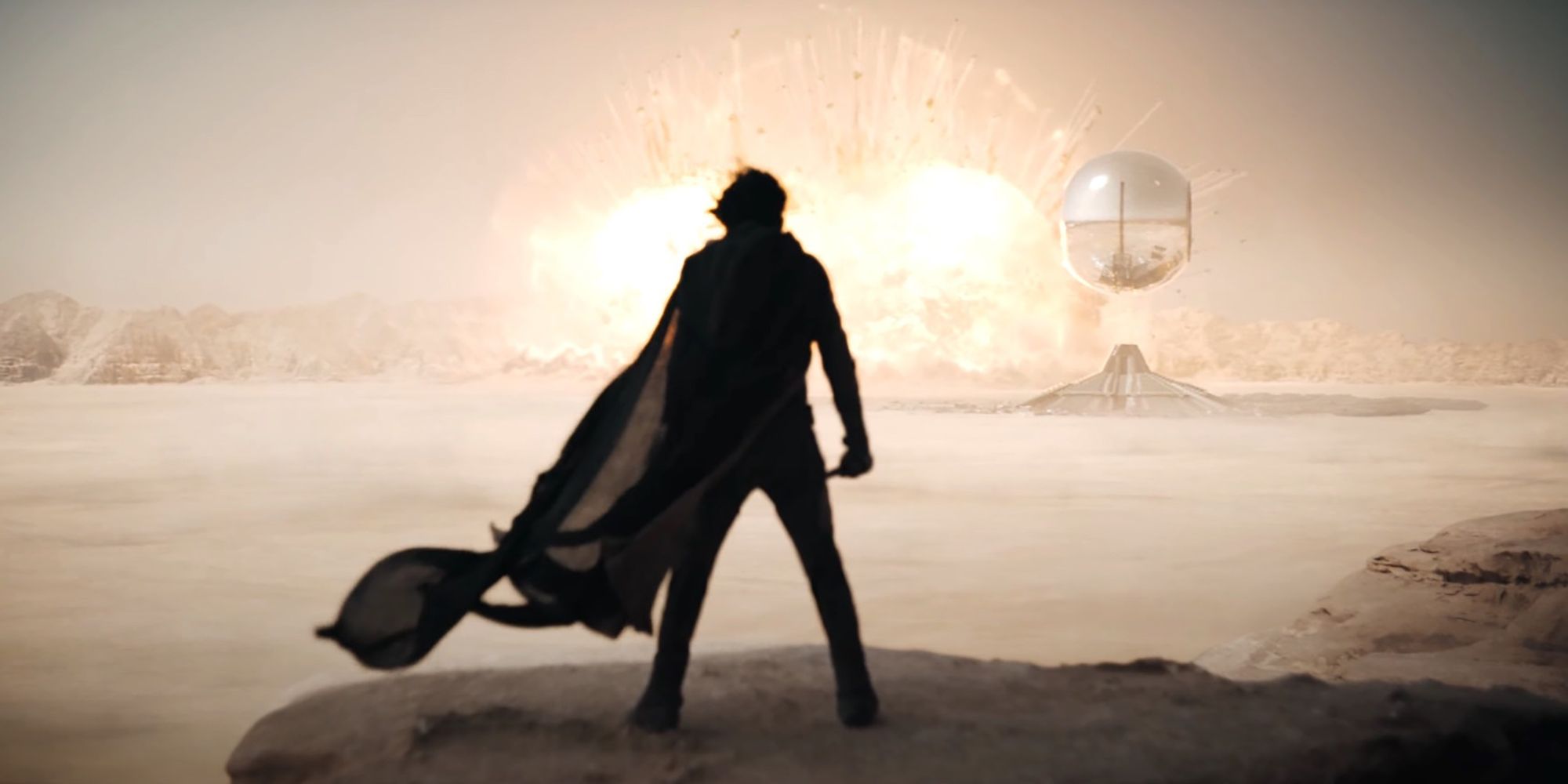
The Next Dune Prequel Should Depict The Butlerian Jihad
Dune: Part Two depicted one of the best science fiction wars of modern memory, but a series about this conflict might be even more spectacular.

